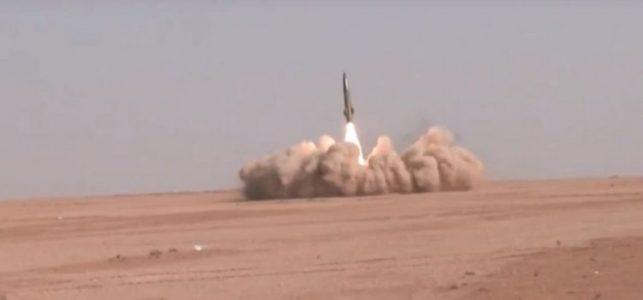
ISIS terrorists are hidding in tunnels to ambush Iranian-backed troops
Syrian and allied troops advanced into Islamic State-controlled parts of Syria. Marching from the city of Dayr Az Zawr down the Euphrates River toward the Iraqi border, they linked-up with Iranian-supported militias and converged on the town of Al Bukamal – ISIS’s last stronghold in Syria.
To be clear, designations such as “Syrian army” and “Syrian military” are euphemisms. According to Iranian opposition sources, Iran’s Islamic Revolutionary Guards Corps pays monthly salaries for no fewer than 250,000 combatants and security personnel in Syria – i.e. the entire military apparatus supposedly fighting for the regime of Syrian president Bashar Al Assad.
The IRGC’s own commanders make no secret of the fact they oversee 70,000 combatants deployed in the country, including the Iraqi and Lebanese branches of Hezbollah and various militias of Afghan Hazaras, Pakistani Shi’a and others.
Meanwhile documentation from the Assad regime lists indicates that a further 88,000 native Syrian combatants – foremost various militias of the so-called “Local Defense Force” and “National Defence Force” — are under the IRGC’s control, too.
Unsurprisingly, a contingent of Hezbollah from Lebanon formed the spearhead for the attack on Al Bukamal. Other groups apparently involved in this operation include the IRGC’s Liwa Fatimiyoun, Harakat An Nujba and Harakat Hezbollah from Iraq and Liwa Al Qods.
The only regime unit that has been identified as being directly involved is the 800th Battalion of the Republican Guards Division – one of three regime formations still operating T-72 main battle tanks.
Russian artillery, communications and air power support the IRGC-led conglomerate. On Oct. 31 and Nov. 3, 2017, Russian navy submarines Veliky Novgorod and Kolpino fired Kalibr cruise missiles from the Mediterranean Sea – supposedly targeting ISIS in Syria. On Nov. 3, six Mozdok-based Tupolev Tu-22M-3 bombers carpet-bombed Al Bukamal.
The initial advance on Al Bukamal and the nearby town of Mayaden proceeded at a high pace, and the Kremlin declared both liberated on Nov. 8 and 9. In fact, the first IRGC assault on Al Bukamal ended in catastrophe. According to one report, ISIS fighters waited inside tunnels in the heart of the town until Hezbollah and other IRGC proxies marched in.
On the evening of Nov. 9, ISIS ambushed the attackers, hitting them with multiple car bombs and causing heavy losses. Over following days, ISIS increased the pressure. On Nov. 12, a car carrying five extremists from Chechnya – all wearing Russian military uniforms – attacked Dayr Az Zawr air base.
One of them reportedly blew himself at the gate, while others managed to penetrate the perimeter and destroy three Aero L-39 Albatross fighter jets.
In a similar attack, ISIS managed to blow up the supply depot at the local football stadium and also kill a brigadier general from the regime’s Tiger Force in the town of Mayadeen. Finally, the extremists claimed to have shot down a helicopter near Al Ward North oil field in the Salihiyah area. There are reports that a high-ranking IRGC officer was killed during the fighting in Al Bukamal.
Combined losses from all of these battles include up to 15 IRGC, Hezbollah and Russian officers alone – in addition to dozens of non-commissioned officers and other ranks.
As should be expected, the IRGC and Russians retaliated. The former by shelling villages east of Al Bukamal, where hundreds of families that fled the fighting had found temporary refugee. The latter with 36 hours of air and missile strikes on the town and surrounding areas that killed at least 50 civilians.
Source: WIB





